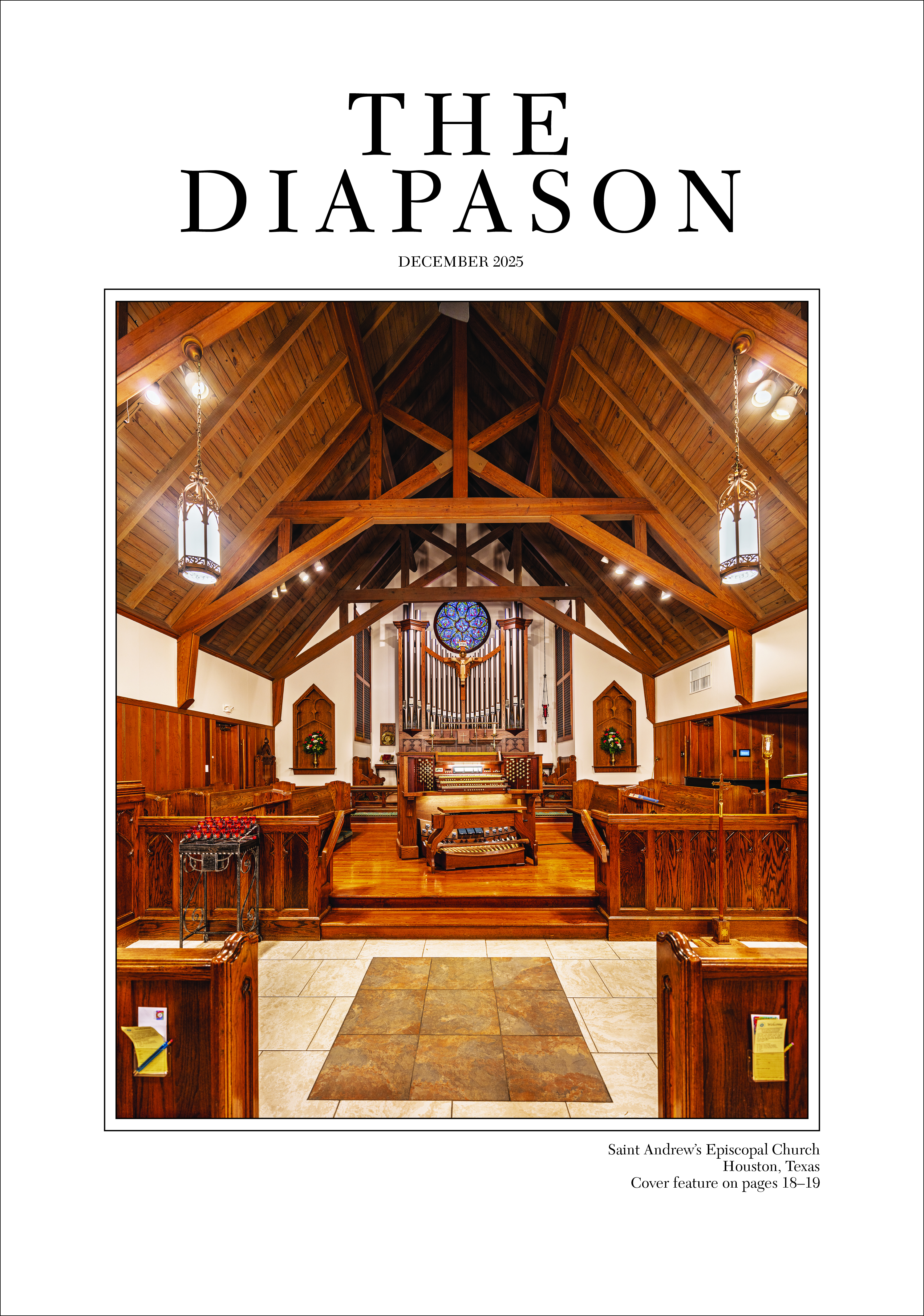Matthew Koraus: Improvisation on Tu Es Petrus.
Sebastian Glück, Opus 16 and 17, St. Patrick Catholic Church, Huntington, New York.
Chancel Organ: Opus 16 (16 ranks, 1,058 pipes)
Gallery Organ: Opus 17 (46 ranks, 2,564 pipes)
Includes pipework from Frank Roosevelt’s three-manual, thirty-six rank Organ No. 408 at Brooklyn’s Schermerhorn Street Evangelical Lutheran Church. This installation was featured on the cover of the April 2018 issue of The Diapason. https://editiondigital.net/publication/?i=483232
Sebastian M. Glück, Opus 24 was built for Setauket Presbyterian Church, Setauket, New York. 25 ranks, 39 stops, 1,392 pipes. Electropneumatic action, wind pressure 4 inches throughout. Featured on the cover of the August 2021 issue of The Diapason.
https://www.thediapason.com/content/cover-feature-sebastian-gluck-opus-…
For information: www.gluckpipeorgans.com/

